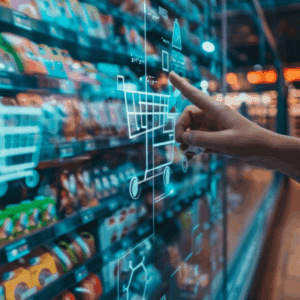By
Katrin Zimmermann, TLGG

The
past years have been rough on the retail sector, to say the least. Still
struggling to adjust to the rise of e-Commerce, retailers realize that a much
bigger challenge is still ahead of them — urbanization.
To
understand how connected urban development and retail are, look no further than
the bankrupt retailer, Sears.
Sears
first rose to fame in the 1920s, when Americans living in cities outnumbered
those living in rural areas for the first time. Sears catered to this new
target group by building department stores in urban working-class neighborhoods
across the country. The 1960s however saw yet another shift in urbanization.
Governmental mortgage programs and affordable cars gave rise to a new
phenomenon: suburbs. The suburban home and the lifestyle associated with it
quickly became a cornerstone of the American dream.
Sears
reacted by building shopping malls in the outskirts of cities. These malls were
easily accessible by car, and mainly catered to families on their weekly
shopping spree. At the height of its success, the company built the Sears Tower
in Chicago — at the time, the tallest building in the world. Unfortunately,
Sears has become less proficient in adapting to the zeitgeist, but its rise — and fall — are still illustrative of just
how important urban developments are for retail strategy.
As
time evolves, cities will see urban landscapes change at an unprecedented speed
and scale. By 2050, 60% of the world’s population will
live in cities. The social, economic and technological shifts accompanying
this rapid urbanization impact all areas of retail. However, they are
particularly disruptive to customer experiences, store formats and logistics.
Injecting
$20
trillion per year into the world economy by 2025 alone, urban consumers’
purchasing power will make them the prime target group for retailers. Yet,
catering to them will not be easy: diverse, fast-paced and digitally savvy,
urban consumers are used to having the city at their fingertips on their
smartphones.
This
competitive landscape requires retailers to fundamentally rethink how they
engage with their customers. We have already witnessed shifts in this direction
with the omnipresence of pop-up stores and immersive brand experiences. Yet in
the long run, this will not be enough. There are only so many Instagram photos
you can take before you become tired of what is essentially an empty
experience.
Instead,
retailers need to focus on creating real value for busy city dwellers. Rather
than competing with e-Commerce and other offers in the city, retailers need to
complement them. Nordstrom shows what this could potentially look like: instead of carrying inventory, “Nordstrom Local” stores
offer tailoring and alteration services, online order pickups and personal
stylist consultations.
This brings us to store formats. We don’t
know what the future of urbanization will look like, but one thing is certain:
it will be crowded. Anybody who has been to mega-cities such as Shanghai or
Mexico City will tell you that competition for space is fierce. Few retailers
will be able to afford the luxury of using hundreds of square feet purely for
the display of goods. Vacant stores can be re-purposed as co-working spaces or
low-income housing. But retailers also need innovative ideas to fully leverage
the potential of their space, likely resulting in new business models. Yoga
brand Alo’s Manhattan presence already doubles as a yoga studio, and in mattress
company Casper’s flagship store, customers can pay $25 to take a nap. We will
likely see more of such hybrid concepts in the future.
Needless to say, these developments have a
big impact on logistics. Urbanization creates a dilemma for retailers: on the
one hand, customers expect a high turnover of inventory and fast delivery of
goods. On the other hand, the storage space necessary to fulfill these requests
becomes increasingly expensive.
This dilemma can be an advantage for brick-and-mortar
stores, which already have a dense network of stores in convenient locations. Zara and Walmart, for example, are using
existing stores as online fulfillment centers. China’s online giant Alibaba
takes the integration between online and offline even further. Ahead of Singles
Day 2017, it recruited 600,000 Chinese “mom and pop shops” to install its store
management system, which allowed shop owners to stock popular online items.
Analysts consider this system as playing an important role in boosting
sales by 40% that year.
Whether it’s customer experiences, store
formats or logistics, one thing is certain — the future success of retailers
will depend on how well they integrate themselves into a city’s ecosystem. Today’s
top 50
global cities account for 21% of GDP,
and mega-cities such as Delhi already have more inhabitants than entire
countries.
Given the size and economic power of many
urban areas, retail strategies need to be tailored to cities rather than
countries. If they succeed, brick-and-mortar stores cannot just re-emerge as
centers of retail, but as centers of urban communities across the world.
Katrin Zimmermann
is Managing Director of the Americas, TLGG Consulting. With a proven track record of pushing
boundaries, Zimmermann moved to the U.S. to open TLGG Consulting’s first
international office. In her role as Managing Director of the Americas, she
advises clients such as Ford, Unilever and Bayer on digital strategy, business
model innovation and organizational transformation. Prior to joining TLGG
Consulting, she served as Lufthansa’s Global Head of Business Innovation,
making her one of the first entrepreneurs in Germany and beyond.






